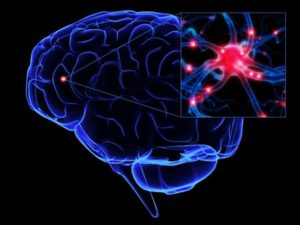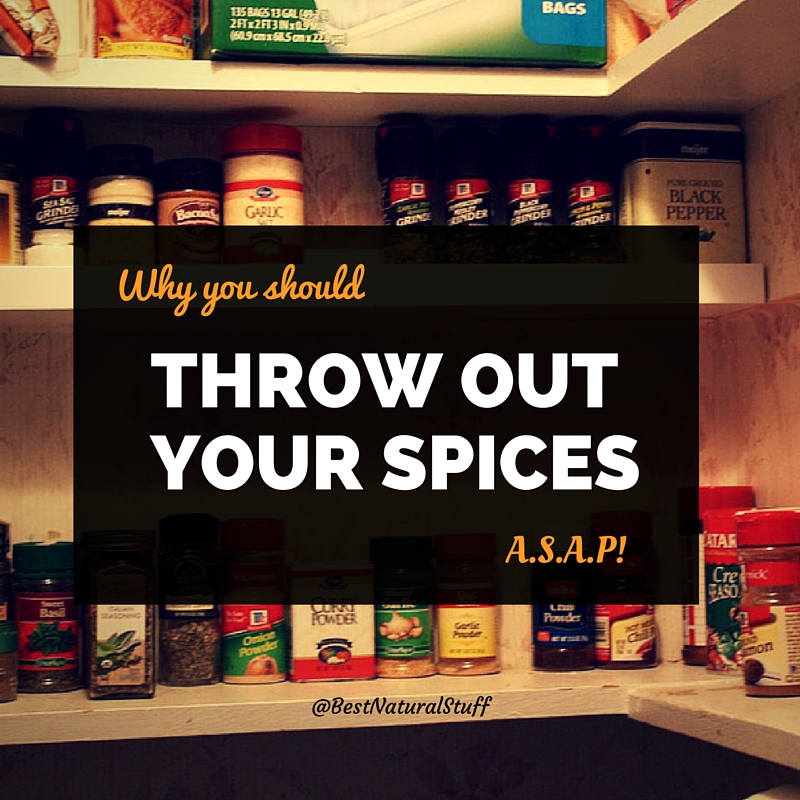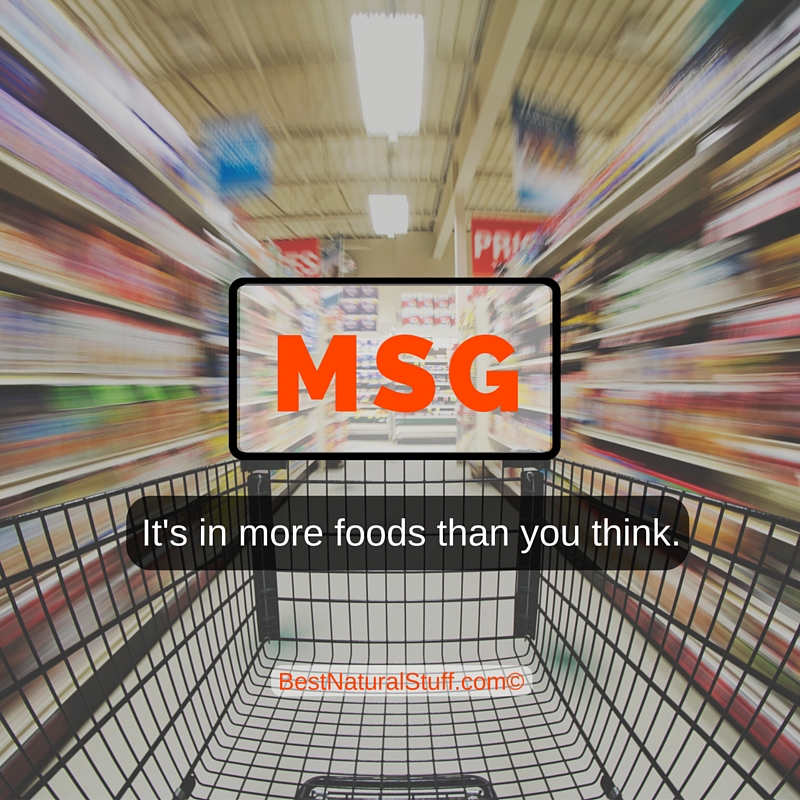
What does MSG do to you?
Monosodium Glutamate
MSG is a flavor enhancer, it can trick the brain into thinking bad tasting food, tastes good and it’s extremely addictive. Most people associate this ingredient with Chinese food or extra salty seasonings which is true, but it’s used in much more these days. Once manufactures discovered it’s addictive powers, its popularity skyrocketed and MSG is now used worldwide as a flavor enhancer in thousands of products. You may have heard of it already because in the last few years, there has been lots of press on the dangers of msg. So, what does msg do to you? Why should you care?
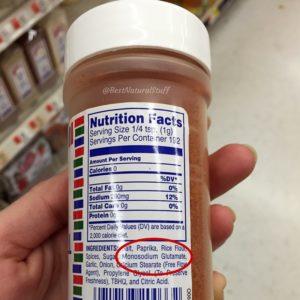 Despite what food labels say, it is in just about every delicious tasting snack you can think of! What is msg found in? Almost all processed foods contain it, meaning fast food and even packaged food food items you find in the grocery store. You’re not going to like this one, but most all restaurant food contains it. I know, bummer right? Sure the food looks delicious and well presented when it comes out on your plate, but do you really know what types of products they use to make that food? Restaurants buy in bulk and use lots of packaged, boxed and canned ingredients. Another shocker, just about all the spices you have in your cabinet contain msg as well right in there with all those preservatives. I’ve mentioned it before on my post about how Msg in seasoning is bad… really bad. So what does MSG do to you? Lets get down to it.
Despite what food labels say, it is in just about every delicious tasting snack you can think of! What is msg found in? Almost all processed foods contain it, meaning fast food and even packaged food food items you find in the grocery store. You’re not going to like this one, but most all restaurant food contains it. I know, bummer right? Sure the food looks delicious and well presented when it comes out on your plate, but do you really know what types of products they use to make that food? Restaurants buy in bulk and use lots of packaged, boxed and canned ingredients. Another shocker, just about all the spices you have in your cabinet contain msg as well right in there with all those preservatives. I’ve mentioned it before on my post about how Msg in seasoning is bad… really bad. So what does MSG do to you? Lets get down to it.
What does MSG do to you?
MSG is a brain stimulant and an excitotoxin. MSG acts as a chemical transmitter that permits brain cells to communicate. But what does msg do to you that can cause permanent damage? There are so many msg side effects it’s a bit frightening and most people don’t realize the severity of this hidden seasoning. MSG damages the brain by over exciting your brain’s cells to the point that they burn out and die! It affects both your brain’s neurotransmitters and their pathways. The body’s reacts to MSG intake by triggering insulin, fat storage, adrenaline, and food cravings. (Which is why it is so addictive.. and why you can’t stop eating from that bag of seasoned Doritos)
MSG is terrible, to say the least. Not only for adults but especially for children under the age of 12, since their blood brain barrier hasn’t developed all the way. This means MSG can travel straight up into their brain. This is why it’s so important to read the ingredients on the snacks you give to your kids! Even if you don’t have kids, if you’re thinking about it or are pregnant, these chemicals also cross the placental barrier. This can damage the brains of unborn children.
Now you might be thinking I don’t use a lot of salty seasoning, so I don’t have to be worried about MSG in my food. Statistics show that processed foods make up over 70% of the standard american diet. So you may want to start taking this information seriously, it’s in much more food than you think.
Why is MSG bad for you?
MSG is attributed to several neurological disorders like: Migraines, Arthritis, Autism, ADHD, Problems with Neural development, Parkinson’s disease, Alzheimer’s, Dementia, Seizures, Stroke, Heart attack, Endocrine disruptors, Fatigue, Blurred vision, Obesity and Diabetes. (Just to name a few.)
How manufacturers hide MSG
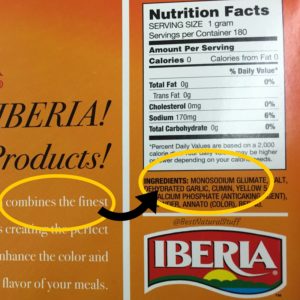 To combat it’s bad rap, the FDA found a loophole when it comes to informing consumers about MSG on food labels.
To combat it’s bad rap, the FDA found a loophole when it comes to informing consumers about MSG on food labels.
FDA requirements state: “A food manufacture does not have to list MSG on the label unless the “added ingredient” is 99% pure MSG. “
Did I mention MSG is in almost every processed food you eat? I’m serious that crap is in EVERYTHING! Although it’s not always going to be listed on the ingredient label as MSG, like most of the seasonings do. There are over 40 separate ingredients that food manufactures use, and they all have MSG in them.
Here’s the technical mumbo-jumbo: Monosodium glutamate contains the non-essential amino acid: glutamic acid. What companies do is they process the the existing proteins within the food to create free glutamic acids without adding pure MSG. This way they don’t have to list it on their labels because their “added ingredient” is now less than 99% pure MSG. Food Manufacturers just hide they MSG in other glutamic acids so you can’t see it. Very clever.
Be especially careful with labels that advertise things like “no added MSG”. Just think about it, all that means is they didn’t add any EXTRA .But if you read the ingredients you’ll probably find one of the other forms of MSG in there. Here’s what to look for on your food labels.
Other names for MSG on labels
These ingredients most definitely have MSG in them:
- Glutamic acid
- Glutamate
- Monosodium glutamate
- Monopotassium glutamate
- Calcium glutamate
- Monoammonium glutamate
- Magnesium glutamate
- Natrium glutamate
- Anything “hydrolyzed”
- Any “hydrolyzed protein”
- Calcium caseinate
- Sodium caseinate
- Yeast extract
- Torula yeast
- Yeast food, Yeast nutrient
- Autolyzed yeast
- Gelatin
- Textured protein
- Whey protein
- Whey protein concentrate
- Whey protein isolate
- Soy protein
- Soy protein concentrate
- Soy protein isolate
- Anything “protein”
- Anything “protein fortified”
- Soy sauce
- Soy sauce extract
- Anything “enzyme modified”
- Anything containing “enzymes”
- Anything “fermented”
- Anything containing “protease”
- Vetsin
- Ajinomoto
- Umami
These ingredients often contain or produce MSG:
- Carrageenan
- Bouillon and broth Stock
- Any “flavors” or “flavoring”
- Natural flavor
- Maltodextrin
- Oligodextrin
- Citric acid,
- Citrate
- Anything “ultra-pasteurized”
- Barley malt
- Malted barley
- Brewer’s yeast
- Pectin
- Malt extract
- Seasonings
These ingredients are suspected of containing or creating sufficient processed MSG:
- Corn starch
- Corn syrup
- Modified food starch
- Lipolyzed butter fat
- Dextrose
- Rice syrup
- Brown rice syrup
- Milk powder
- Reduced fat milk (skim; 1%; 2%)
- most things “low fat” or “no fat”
- anything “enriched”
- anything “vitamin enriched”
- anything “pasteurized”
- Annatto
- Vinegar
- Balsamic vinegar
- Certain amino acid chelates (Citrate, aspartate, and glutamate are used as chelating agents with mineral supplements.)
And for all you health foodies out there, I recently learned that Braggs Liquid Aminos also is a form of MSG. I will be writing another post on that, but in the meantime look it up for yourself and see what you find. Very interesting stuff.
So I know this is a lot of information, and no you don’t have to memorize that entire list of ingredients, just try to follow these simple points:
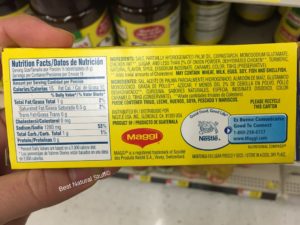 First and Foremost: READ YOUR LABELS!
First and Foremost: READ YOUR LABELS!
- If a label has a long list of complicated ingredients –It probably has MSG in it.
- If the food is extra salty – It probably has MSG in it.
- If you are eating fast food or processed food – It probably has MSG in it.
- Don’t trust something just because it’s sold in a health food store or claims to be “all natural”. All natural product labels can be marketing scams. The US allows “natural flavors” to include protein hydrolysates which can contain up to 20% MSG by weight.
For more info on MSG, this article by Natural News features an awesome interview with Dr. Russell Blaylock. He has become an advocate against MSG and its detrimental health effects and if you have some time, I definitely recommend reading it.
So, what does MSG do to you ? It causes brain damage, obesity and adverse reactions. But don’t make yourself crazy. Yes MSG is in a lot of food, but what we try to do is just continue to eat the best most natural food available. Meaning organic if possible, no fast food or processed food and mostly fresh fruits and veggies. Take small steps at a time and the very first one is to just start reading the labels of foods and products before you buy and educate yourself about what you are putting into your body. I guarantee just by doing that you’re heading in the right direction.
Sources:
http://www.truthinlabeling.org/hiddensources.html
http://www.realfoodwholehealth.com/2011/05/excitotoxins-msg-and-hidden-names/
http://www.rense.com/general92/hidename.html
